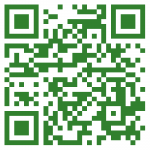Kevin Wells’ application for producing quick response (QR) codes – the two dimensional ‘square’ bar codes that contain more useful information that the more traditional bar codes – has seen another update, and now stands at version 2.05.
Read MoreTag: QrCode
QrCode 2.04 has you numbered
Quick response codes are the ‘square’ – or two dimensional – bar codes you sometimes see on leaflets and posters, which hold useful information that can be scanned in on a phone, to save you manually typing it in. In those situations they might hold a URL, making it easier to visit the relevant site in your phone’s browser, or a phone number, making it easier to key in and phone it.
Read MoreQrCode version 2.03 released
Kevin Wells has released an update to his program for generating QR Codes. Version 2.03 of QrCode deals with a couple of potential issues the application previously had.
Read MoreQrCode 2.02 plays keepy uppy
Kevin Wells has released version 2.02 of his application for creating two dimensional bar codes, known as Quick Response (QR) codes. The application – QrCode – allows the user to key in certain information, and that information is then turned into one of the codes.
Read MoreNews nybble: QrCode version 2.01
Kevin Wells has released a point update to his application for generating QR Codes. New in this version is the ability to create a QR Code for geo-location purposes, containing longitude and latitude information. The program has also had a small bug addressed that could result in a notable delay when fetching QR Codes of a certain size. The software uses Wget to make use of the QR Code Generator website, and it was the use of an asterisk rather than an ampersand when fetching that caused the delay.
Read MoreQrCode rewritten, becomes version 2.00
Kevin Wells has released a new version of his application for turning small amounts of textual information into two dimensional bar codes, aka ‘Quick Response’ codes. These can provide a quick way for people to transfer information into devices that can read them – for example smart phones using a bar code scanner application – such as URLs, contact details, WiFi keys, and so on.
Read MoreQrCode receives a little house training
Kevin Wells has released a new version of his QrCode application. The software is used to produce ‘Quick Response’ codes – two dimensional bar codes that can contain a little more information than their simpler older relatives, with URLs being a common example, whereby you scan a QR Code with your phone or other device, and from there your web browser can be launched pointing to the relevant address. For example, the one used on this page – somewhat pointlessly, I admit – leads to this page.
Read MoreQrCode gains WiFi support
Wait! What? Oh… encoding access details in a QR code. As you were… Kevin Wells’ application for generating QR codes (two-dimensional bar codes) has been given some more attention, and version 1.07 of the application is now available to download. Two notable changes have been added to this version of QrCode:
Read MoreNews nybble: QrCode bins MeCards, picks up vCards
Kevin Wells’ application QrCode has been updated to version 1.06, in which MeCard support – only very recently added – has been dropped in favour of vCard support. The latter Virtual Contact File (VCF) format is more flexible, offering more fields, and is more widely used. At the same time, Kevin has switched from BBC BASIC to Brandy BASIC for the application, as a means to extend the length of text strings he can use. The application is used to generate QR (Quick Response) Codes. These are two dimensional bar…
Read MoreMeCard support added to QrCodes
A graphical way to say “Here’s me card, guv…” Kevin Wells has updated his application for generating QR Codes to add support for ‘MeCards’.
Read More

